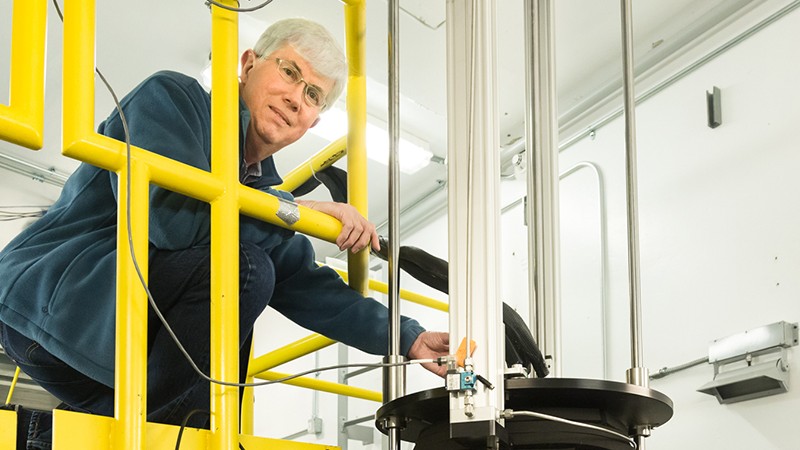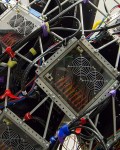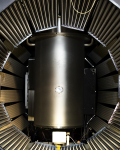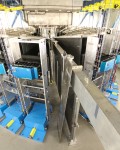There’s a lot of buzz in the photovoltaic community over hybrid perovskites, a class of organometallic lead-halides that are revolutionizing the field by promising cheaper and more efficient means of converting solar energy into electrical power. But while these materials may be the next great advancement in the field, there’s a shortage of basic information on their electronic structures and lattice dynamics, knowledge that can be used to help improve these materials to reach their full performance potential.
Researchers from DuPont and the Department of Energy's Oak Ridge National Laboratory want to fill this knowledge gap with fundamental studies of the microscopic driving factors behind the excellent functional performance of perovskite-based optoelectronic devices. They are making neutron scattering measurements at the Spallation Neutron Source’s (SNS) TOPAZ instrument, beam line 12, which is a continuation of work conducted at SNS's POWGEN, beam line 11A, and NOMAD, beam line 1A, instruments.
“We’re trying to understand how changes in the crystal structure affect performance,” said Michael Crawford, senior research scientist and experiment principal investigator from DuPont Central Research & Development in Wilmington, Delaware. “With neutrons, we can determine where all of the atoms are located.”
They are also using quasielastic neutron scattering to measure the dynamics of methyl ammonium cations in the hybrid perovskites, and inelastic neutron scattering to measure their vibrational spectra. They especially want to see how the motions of the cations respond to changes in temperature.
“Our goal is to better understand these materials in order to further improve their photovoltaic properties and provide guidance to the search for new materials” said Crawford. “For example, one long term goal of research in this area is to discover materials that do not require heavy elements like lead, but maintain the high photovoltaic efficiencies.”
Collaborators on this experiment include researchers from the University of Toronto.
SNS is a DOE Office of Science User Facility. UT-Battelle manages ORNL for the DOE's Office of Science. The Office of Science is the single largest supporter of basic research in the physical sciences in the United States, and is working to address some of the most pressing challenges of our time. For more information, please visit http://science.energy.gov/.







